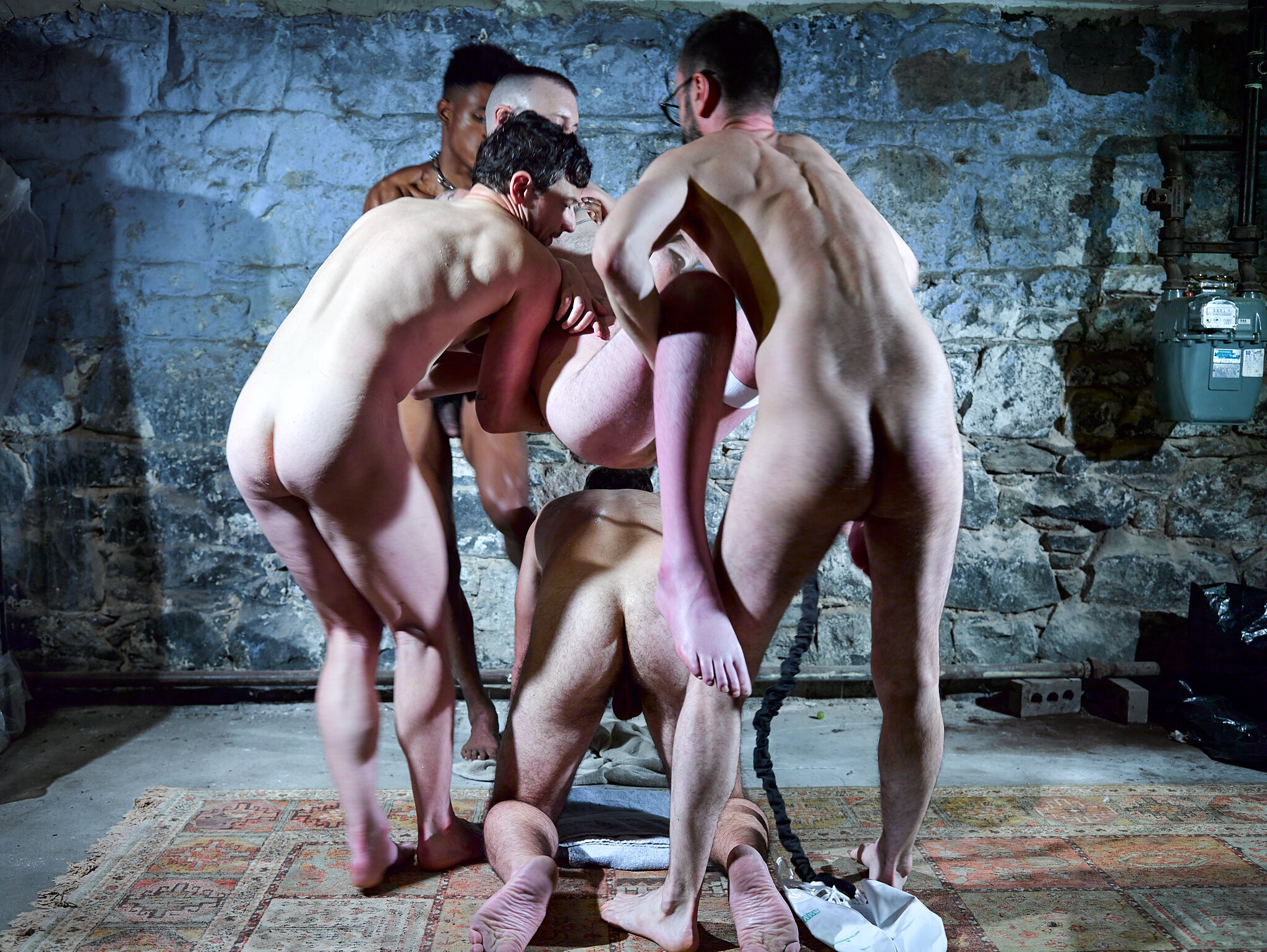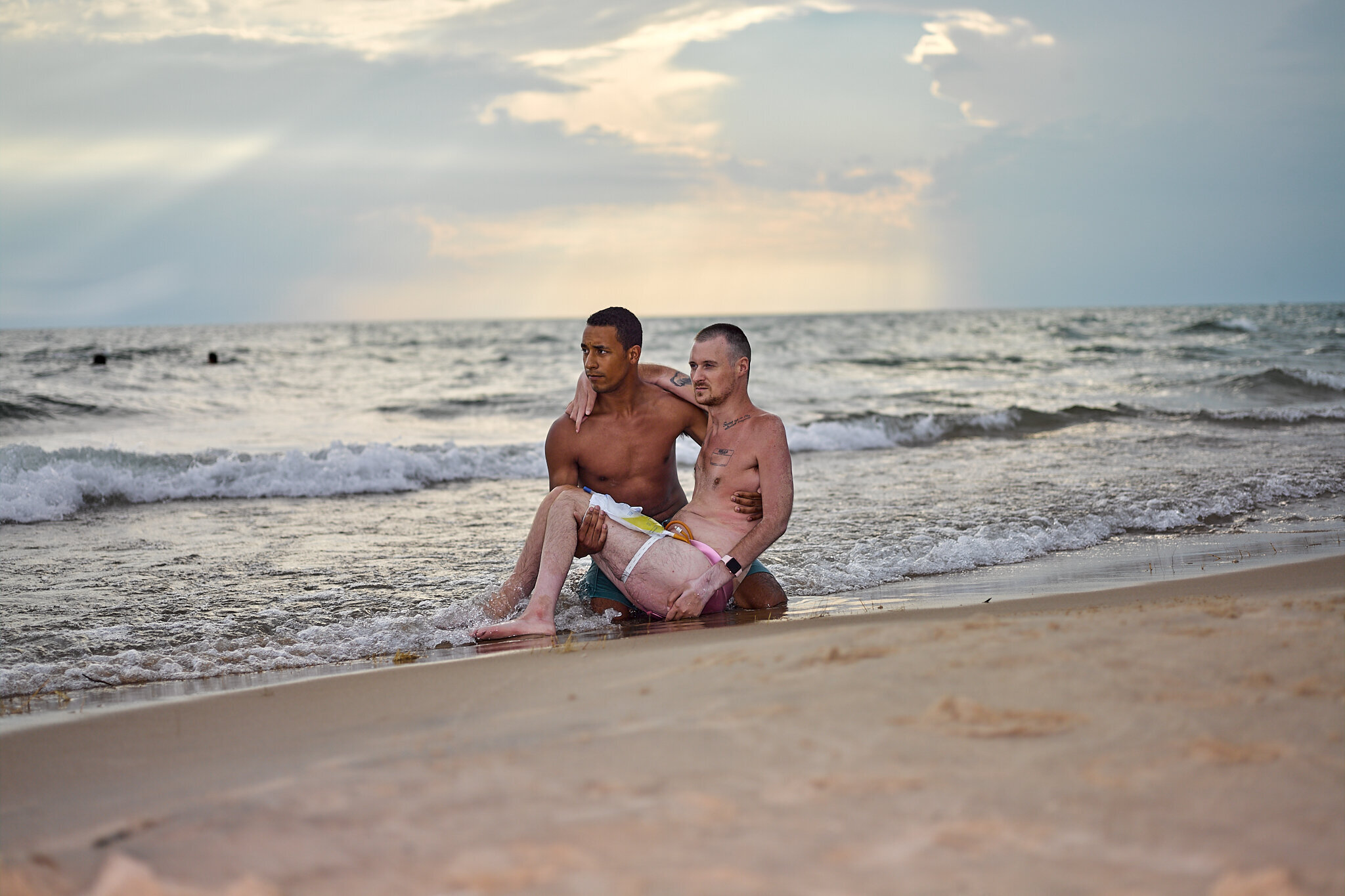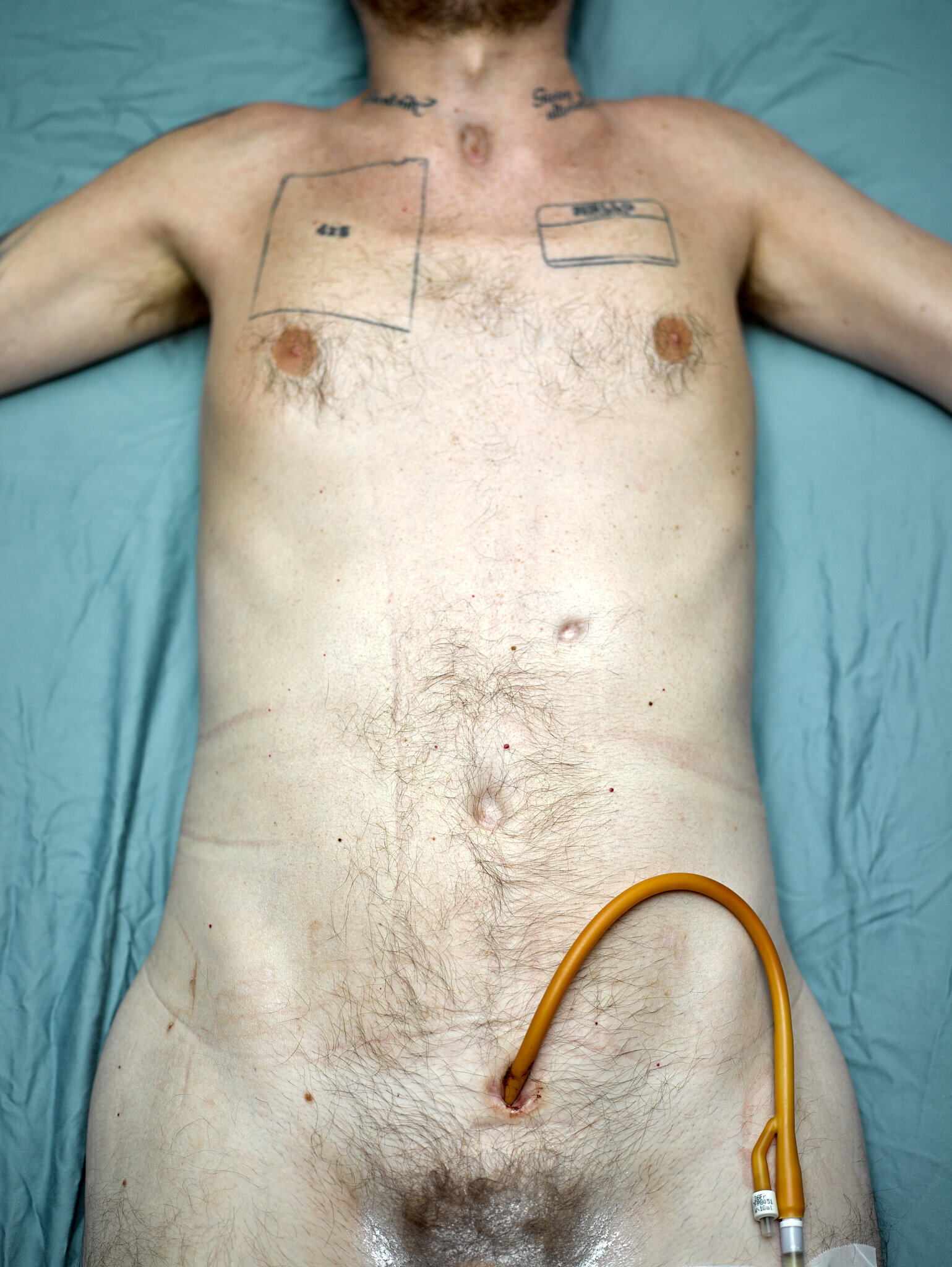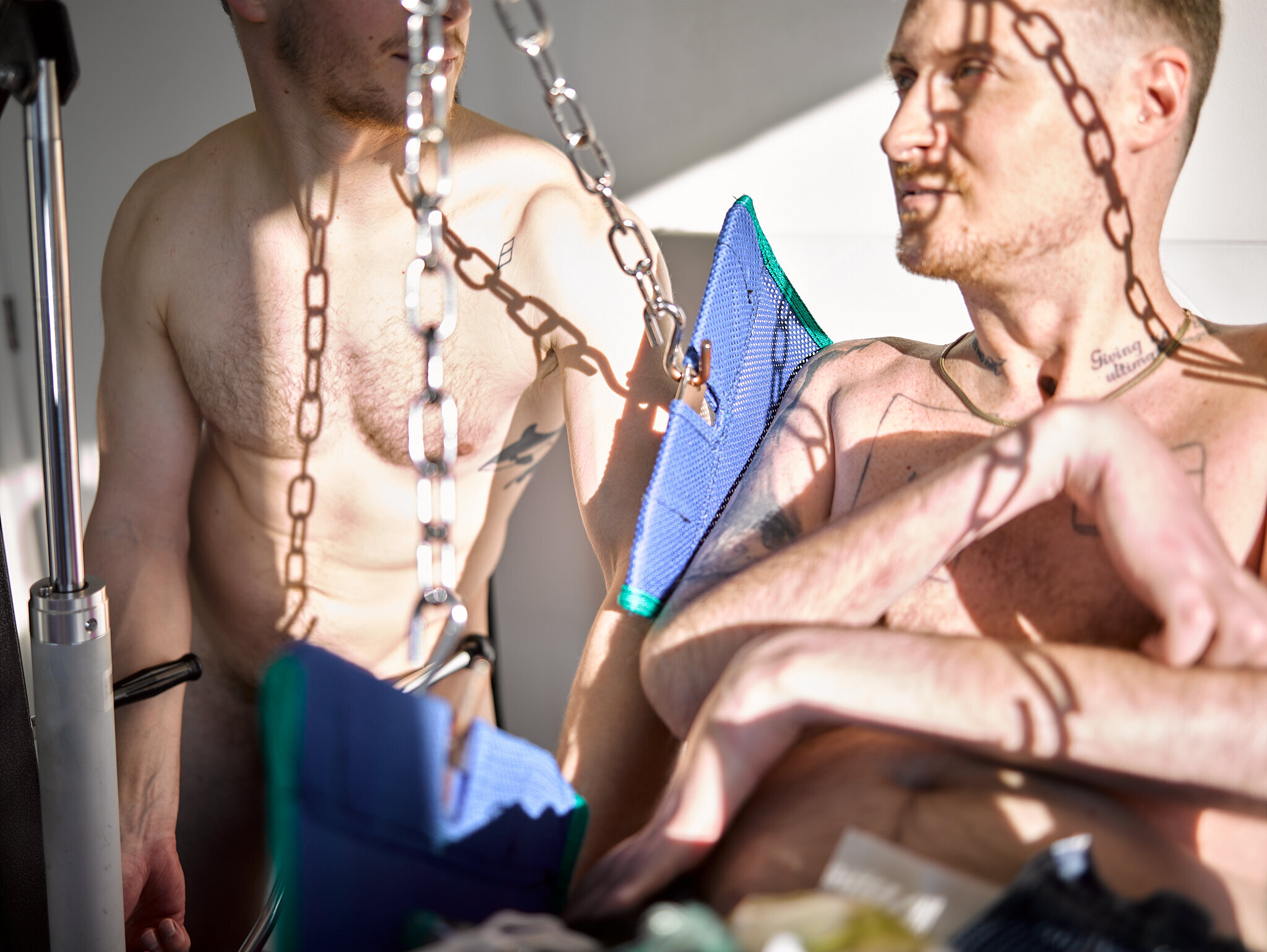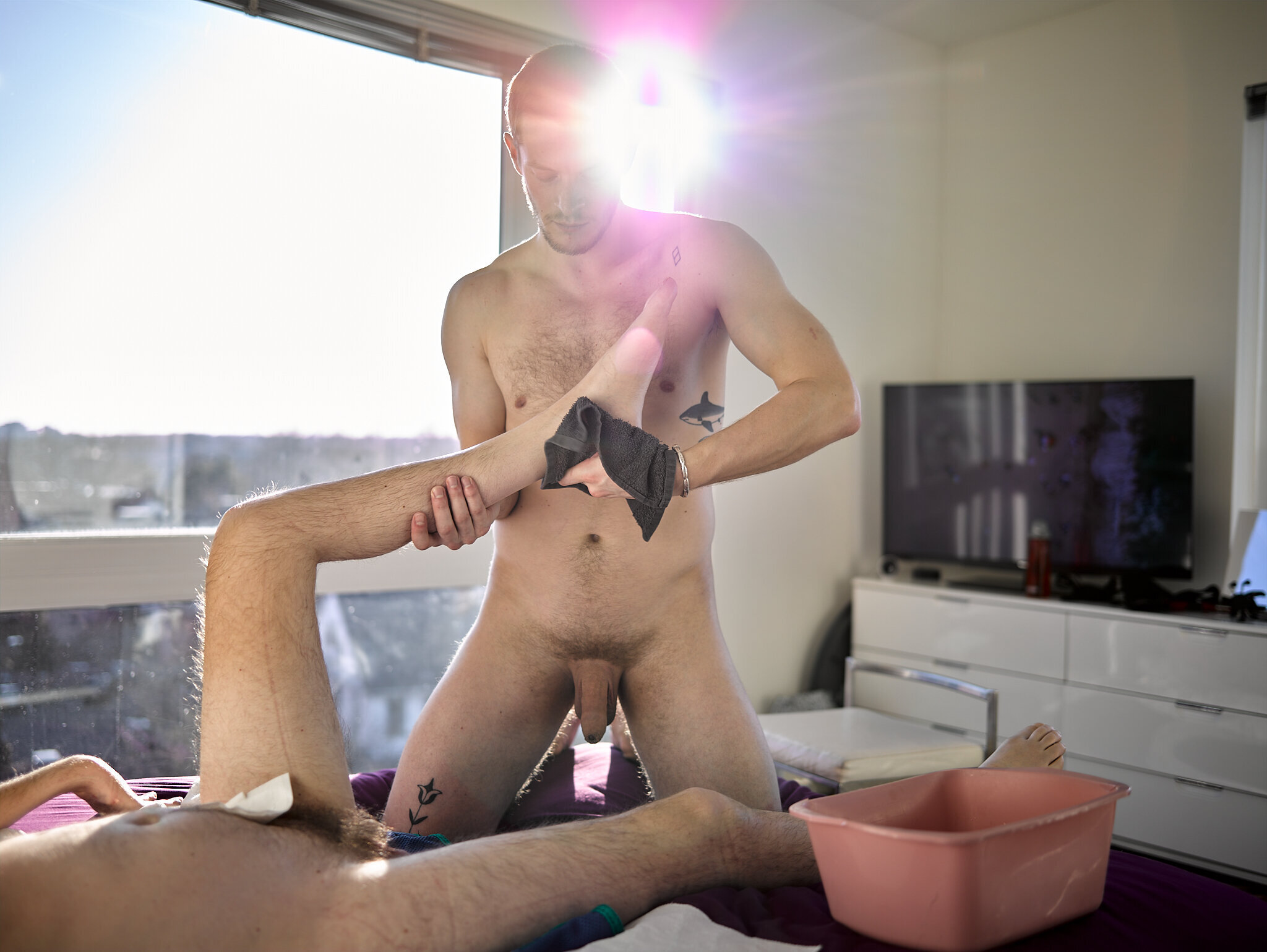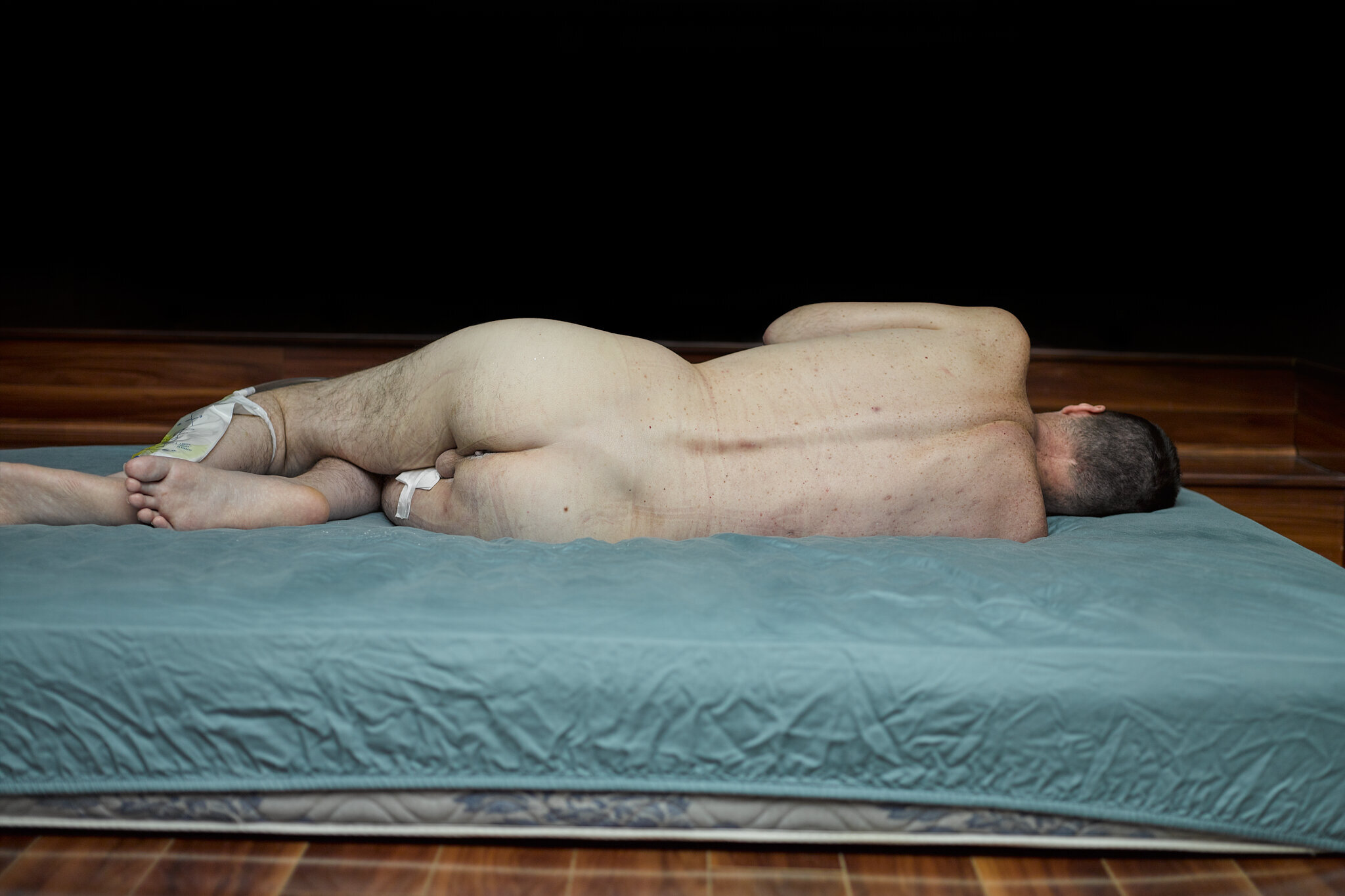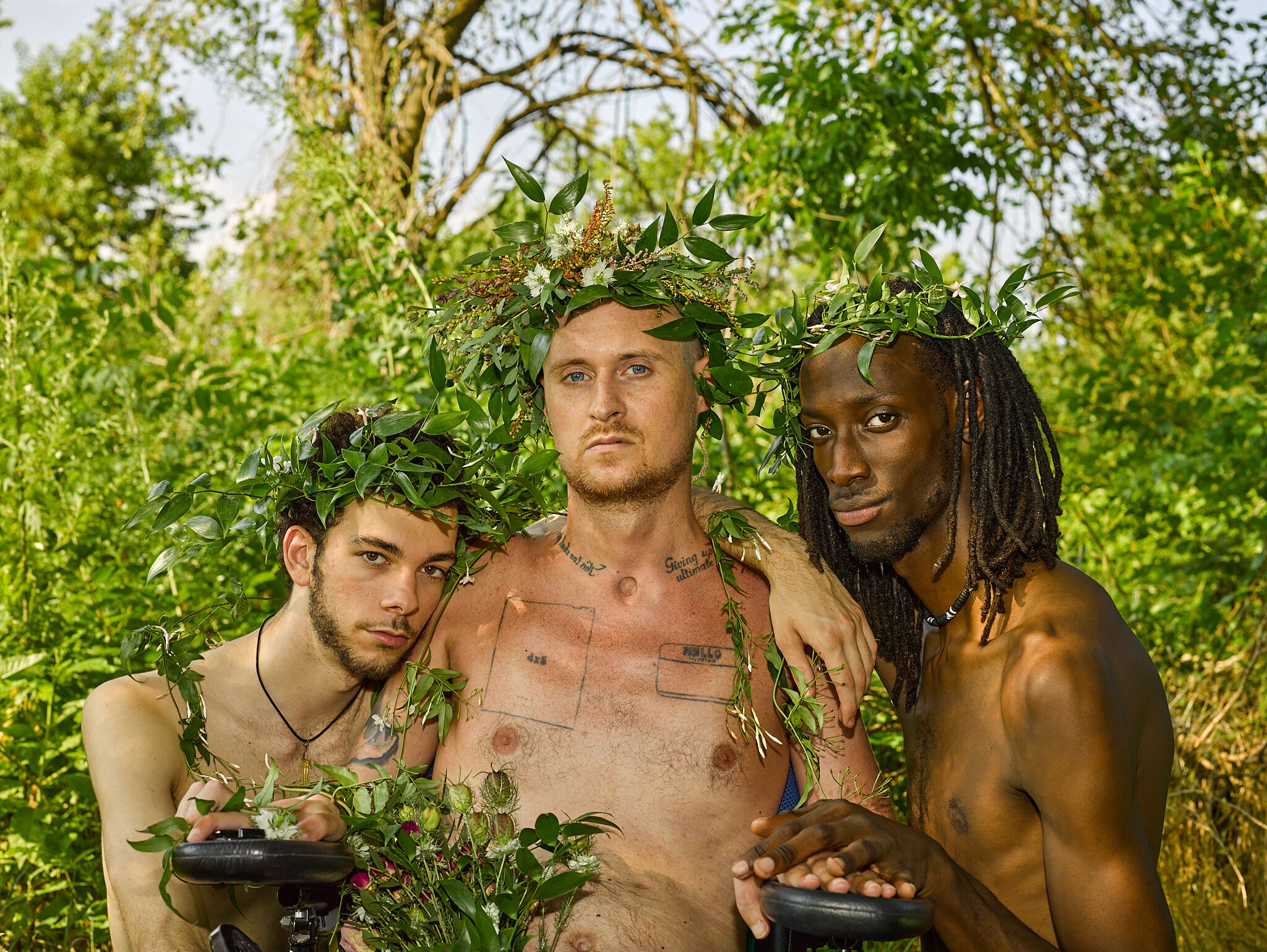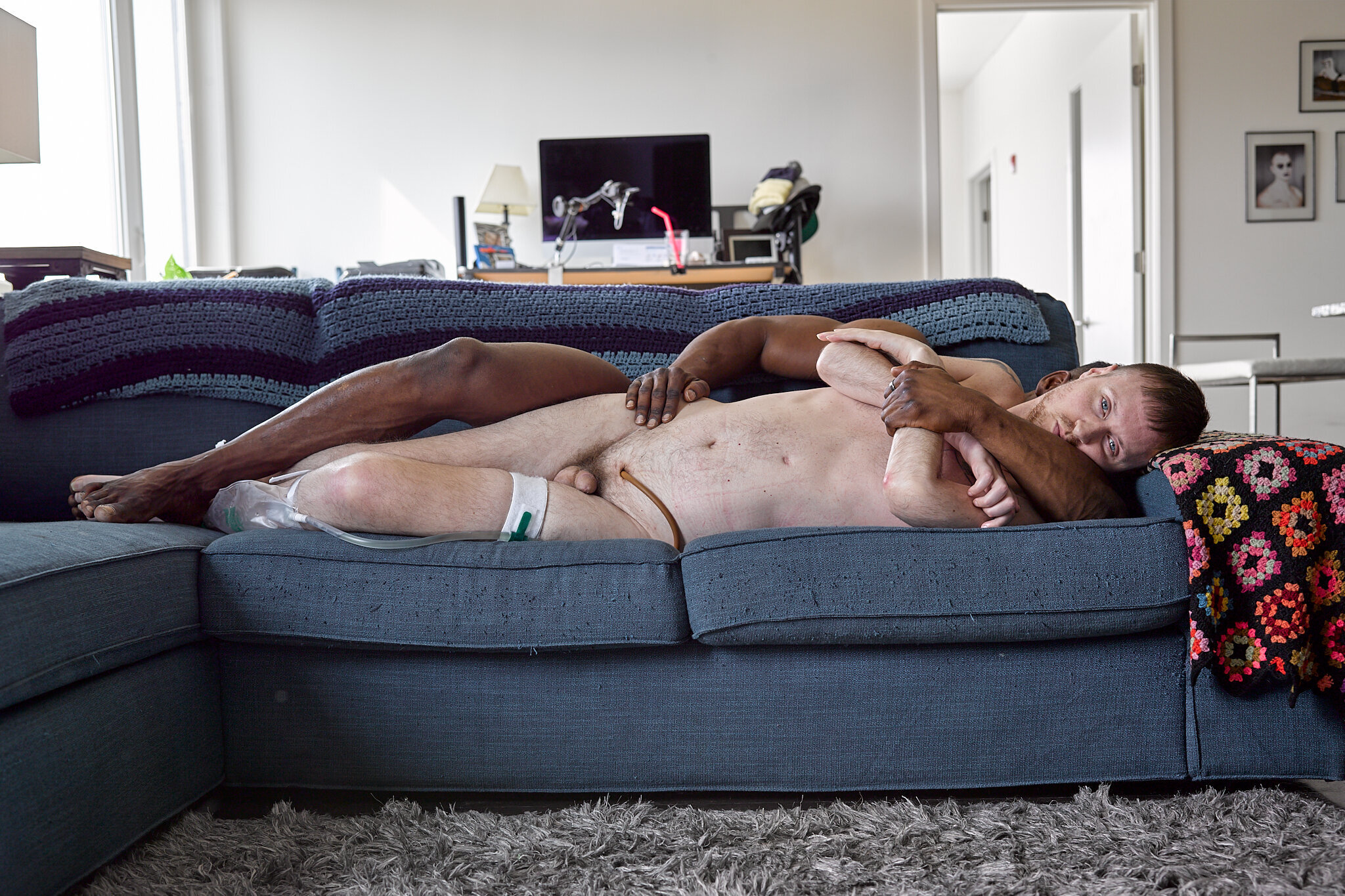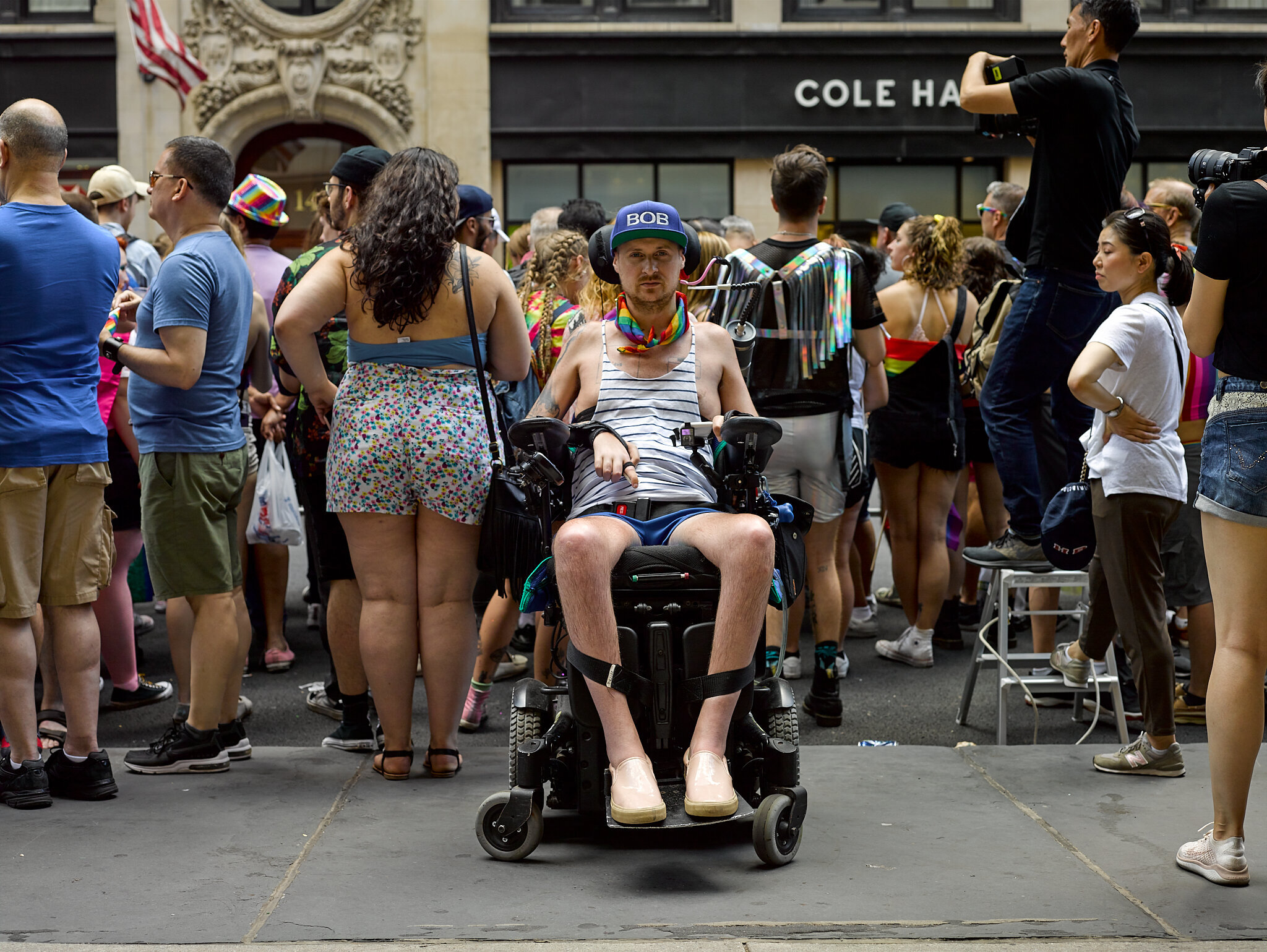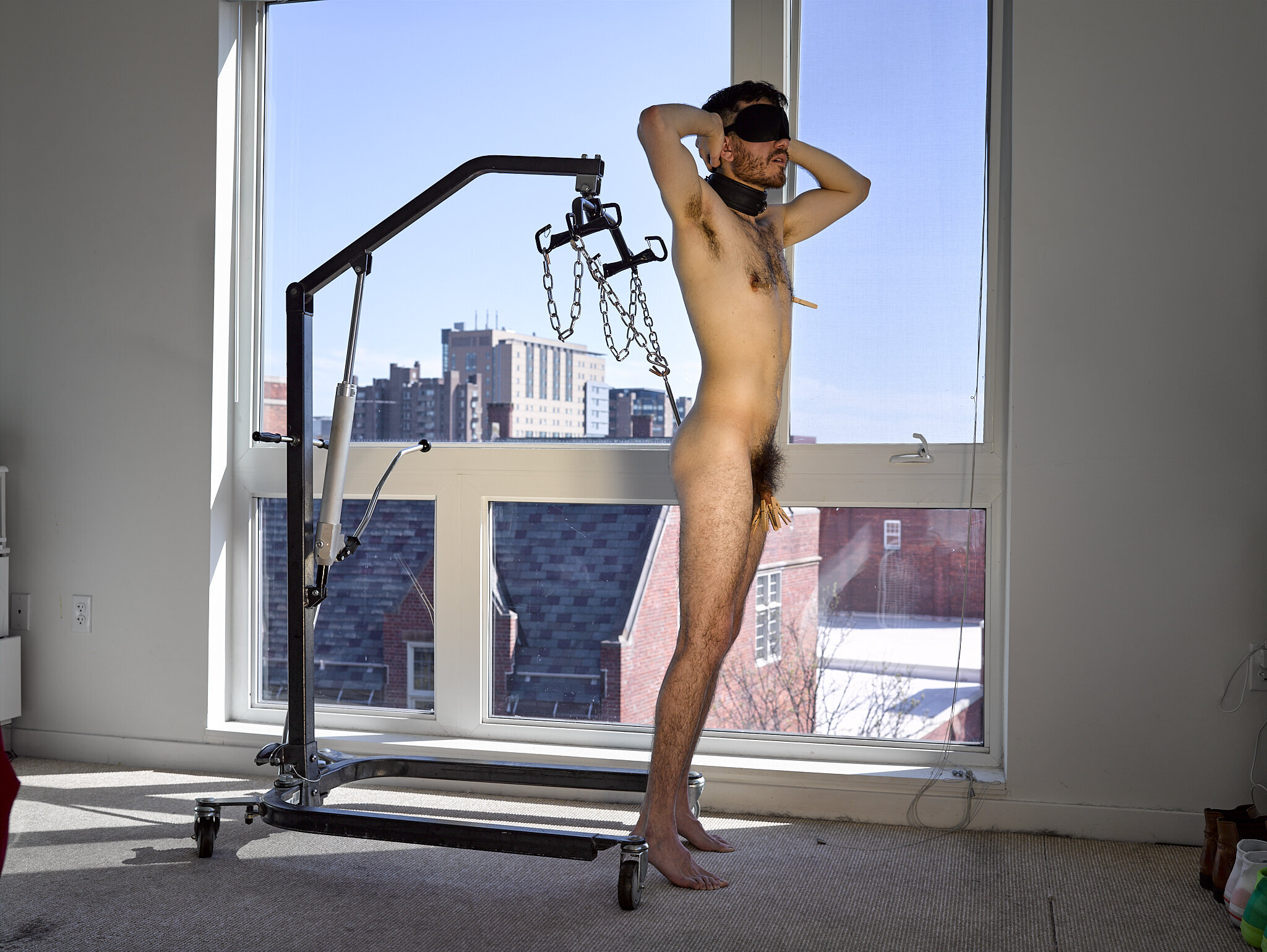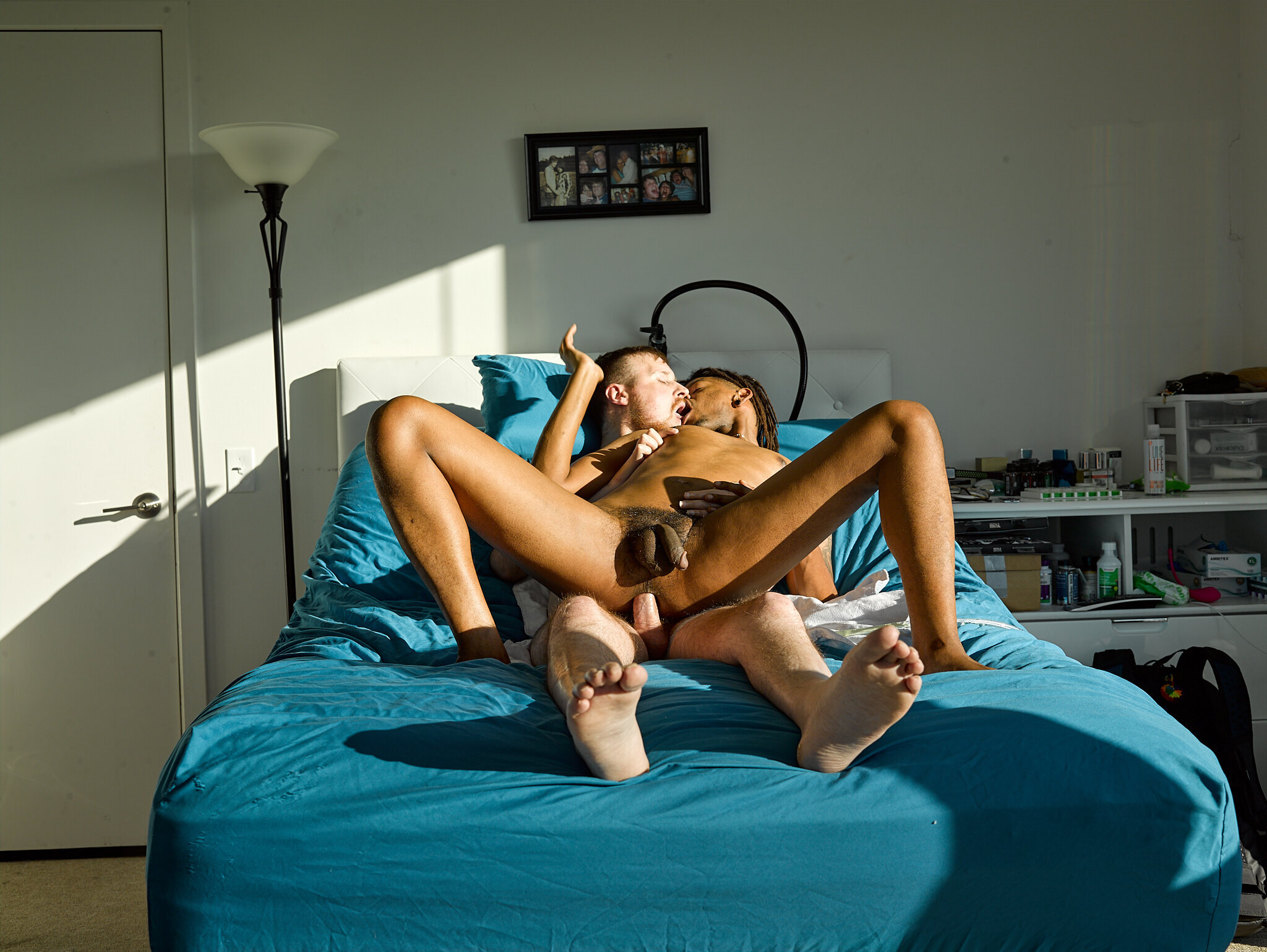Q&A: Robert andy coombs
By Jess T. Dugan | April 15, 2021
Robert Andy Coombs grew up in Michigan's majestic Upper Peninsula where he spent his childhood roaming the great outdoors. He started photographing his walkabouts in middle school and moved on to portraiture in high school. Coombs received a scholarship to Kendall College of Art and Design in Grand Rapids Michigan. During his third year in undergrad, Coombs' sustained a spinal cord injury due to a gymnastics training accident. After a year of recovery, he returned to KCAD and received his BFA in photography in 2013. Coombs' photography explores the intersections of disability and sexuality. Themes of relationships, caregiving, fetish, and sex are depicted and explored throughout. Coombs graduated from the Yale School of Art amidst the COVID-19 pandemic and is currently residing in sunny Miami, Florida.
Jess T. Dugan: Hello Robert! Thanks so much for taking the time to speak with me today. Let’s start at the beginning: how did you initially discover art-making and what was your path to getting to where you are today?
Robert Andy Coombs: Ever since I can remember, I was always a creative child, even when it came to my toys. Legos, trucks and a dirt pile, sandcastles, my little farm set with figurines; I was always creating something and making it look aesthetically pleasing. I was also a little performer, constantly singing anywhere I could, dancing, creating plays, so creativity and an imagination was a way for me to have fun growing up in the middle of nowhere Michigan. I was originally going to go to college for vocal performance but decided against it and went into visual art instead. In middle school/high school, I really took a liking to photographing anything and everything. It just came so naturally to me, and my art teacher nurtured that talent.
JTD: As you write, your work “explores the intersections of being a disabled gay male in today’s society and [your] sexual/intimate adventures.” Tell me about your project CripFag, which is comprised largely of self-portraits and images of you with your lovers/sexual partners. How did this project come to be? Did you have a conceptual framework from the outset, or did it evolve more organically?
RAC: CripFag is an exploration of my body, partners, friendships, fantasies, sex, caregiving, intimacy, fetishes, technology, access, romance, and more. After my spinal cord injury, I had to learn and balance all of these things, so after a few years I had quite a rolodex of inspiration for the concepts. I photograph what I think is missing in mainstream media when it comes to disability and sex. In rehab, the medical professionals shied away from the discussion about disability and sexuality, so I had to do all the research, scouring the internet for different pieces of the puzzle. I also had to explore my body, and due to the lack of function, I was in need of sexual partners to help me explore. So, I would say it came very organically. And it also evolved quite a bit from focusing on me as a disabled man and my body to becoming more about everything that encompasses me being able to have sex/intimacy.
JTD: Tell me about your process for involving other people in this work. Because of the sexual nature of the photographs, I’m curious, in particular, what kinds of conversations took place before, during, and after photographing. What is the experience of the partners you have photographed? Do you have a particular conversation around exhibiting or publishing the images after you have made them?
RAC: Before heading to the East Coast for school, I was in Michigan, which, to say the least, is extremely sexually conservative. I did find a few of my friends to create some images, but the body of work as a whole started with my body. After getting to the East Coast, people from New York, Boston, and a lot of my colleagues from school were very open to helping me create these images. I scour dating apps and social media for potential models. Sometimes people will come to me and others I will seek out. Once I find someone who is interested, I meet with them either in person or through video chat, and we discuss our sexual tastes, what they feel comfortable doing in front of the camera, and just get a feel for each other. Once we come up with a concept, I pretty much know visually what it's going to look like so I can explain it to the other person. Some of the time the other person is just a model there to do their job, and other times it is more sexual. It all depends on chemistry, but either way we both get to share an experience of a lifetime, most of them never being with someone who has a physical disability, so that in and of itself is groundbreaking. Once I send the images out into the world, the feedback I cherish the most is having other disabled people finding my work and re-evaluating how they view themselves. Most of the conversations with them are that they have never felt sexy in their disabled body and I've given them a visual representation of someone who owns their disabled body the way it is and is unapologetic.
JTD: I love that. I’m interested in representations of sexuality and disability, which, as you mentioned, are lacking in both mainstream media and within the art world. How important is the issue of representation in your work? Do you feel a responsibility to create representations of your lived experiences because they are otherwise lacking? And if so, how do you navigate this responsibility with your personal artistic interests?
RAC: That’s a lot of the reason why I started the work: I had very little representation for me to look at when I was newly injured. One of the only things I remember was that there was a movie called “Murderball” which is a documentary about quad rugby. There was really nothing about disability and sexuality. I had to search guys masturbating in wheelchairs in order to find out what that looks like. I think it’s extremely important to be able to see others like you out in the world. Most often people with disabilities are isolated from others who have disabilities so they don't know the possibilities of what their life could be. I don't necessarily feel responsible, but I do know that there is no one else that could make the work that I am making. I’m not trying to sound conceded or full of myself, but I have certain privileges and access that a lot of other people like me don't have, such as purchasing cameras, having a great support system like caregivers, roommates, and photo assistants, and friends/family that support what I’m doing. There are just a lot of factors that go into creating the images I'm creating. You also have to be a certain type of person to be able to suck dick in front of the camera, show it to people, and call it your art! I just want to create the images that I want to see in the world.
JTD: Talk to me about strength and vulnerability; you share highly personal and intimate aspects of yourself from a place of strength and confidence. How do you think about the relationship between strength and vulnerability, and how does this manifest in your work?
RAC: Being a disabled person, you're always in very vulnerable situations. Being naked in front of complete strangers, having them bathe you, feed you, drive your car, asking someone to get the door for you… you are always left very vulnerable. When it comes to my strength and confidence, a lot of that has to do with my upbringing. I grew up able-bodied with a supportive family that nurtured my talents and allowed me to be myself. I also liked what I saw in the mirror. So, when my accident happened, I had already developed this personality and ego, so the damage was already done. Despite becoming disabled and experiencing a drastic change to my body, you couldn’t tell me I was anything other than talented, handsome, and a boss ass bitch. Self-love allows me to take these very vulnerable aspects of my life and turn them into something meaningful. I will show you all my insecurities and vulnerabilities; by doing that I have so much power.
JTD: I’m curious about your Polaroids, which are organized on your website by location: Miami, Yale, and Grand Rapids. There’s a softness in these photographs, due, in part, to the fact that they are Polaroids, but also due to the content and the moments you’ve chosen to document. How do these images intersect with the photographs in your other projects? Do you create the Polaroids with a different purpose or intent?
RAC: I started photographing with Polaroids while studying at Kendall College of Art and Design. It was the Myspace/Facebook golden era and so much of the photography at the time was point and shoot digital for social consumption. I think subconsciously I wanted to photograph my time spent with friends to encapsulate more than taking an unlimited number of photos. It really made me slow down and cherish each frame I had in a 10 pack of film. It still allowed for experimentation but was just constricting enough to keep my senses heightened. $20 for a pack of film was a lot of money, and I would bounce checks at CVS in order to buy them, so I was making sure each frame was well-concepted but also playful. The same year they stopped making Polaroid film, I had my spinal cord injury. So, there are two major reasons why you see a gap in my Polaroids. They started making the film again right around the time I got accepted to Yale. My Polaroids really influence how I frame my different photo shoots. It allows me to be more playful and show a little bit more behind the scenes. I am also influenced by the history of Polaroids and the gay community, and how they allowed documentation of the gay lifestyle without the fear of being outed. I'd like to keep the tradition alive.
JTD: On a slightly more specific note, can you tell me about your “Hello my name is” tattoo on your chest and what it means to you? I love that you have written in it in various photos: one says “Bitch,” another says “Master.” I’m curious to hear more about this.
RAC: This was my first tattoo. At the time, there was a lot of discussion on concept tattoos within my friend group. I was always the naked guy at parties so it seemed fitting to have a name tag so everyone could know who I was… well, for that night at least. I left it blank so that I could be anyone I wanted to be that night. Little did I know it would come in handy for my artwork.
JTD: Who do you look to for inspiration? Are there kinds of images, or representations, you wish you had seen when you were coming of age, but didn’t?
RAC: I look at my friends and our relationships, the things we do together, the things they help me with, and how it looks to the outside world. I love watching porn, and the gays of social media, different trends of what and how they photograph, and their use of light. The images I make are what I think is lacking and what I needed when I was not only a young gay male but a young disabled gay male.
JTD: What are you currently working on? What’s on the horizon for you as an artist?
RAC: I am starting to do more artist talks, I am photographing a lot of street photography at South Beach here in Miami, coming up with new concepts for CripFag, photographing the beautiful boys of Miami, and hopefully I will be able to start teaching as a professor once the hiring freezes are over.
JTD: Wonderful, thank you so much Robert!
All images © Robert Andy Coombs





